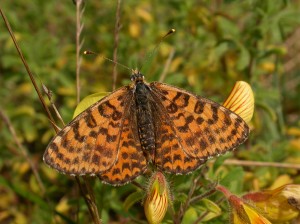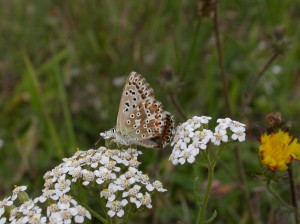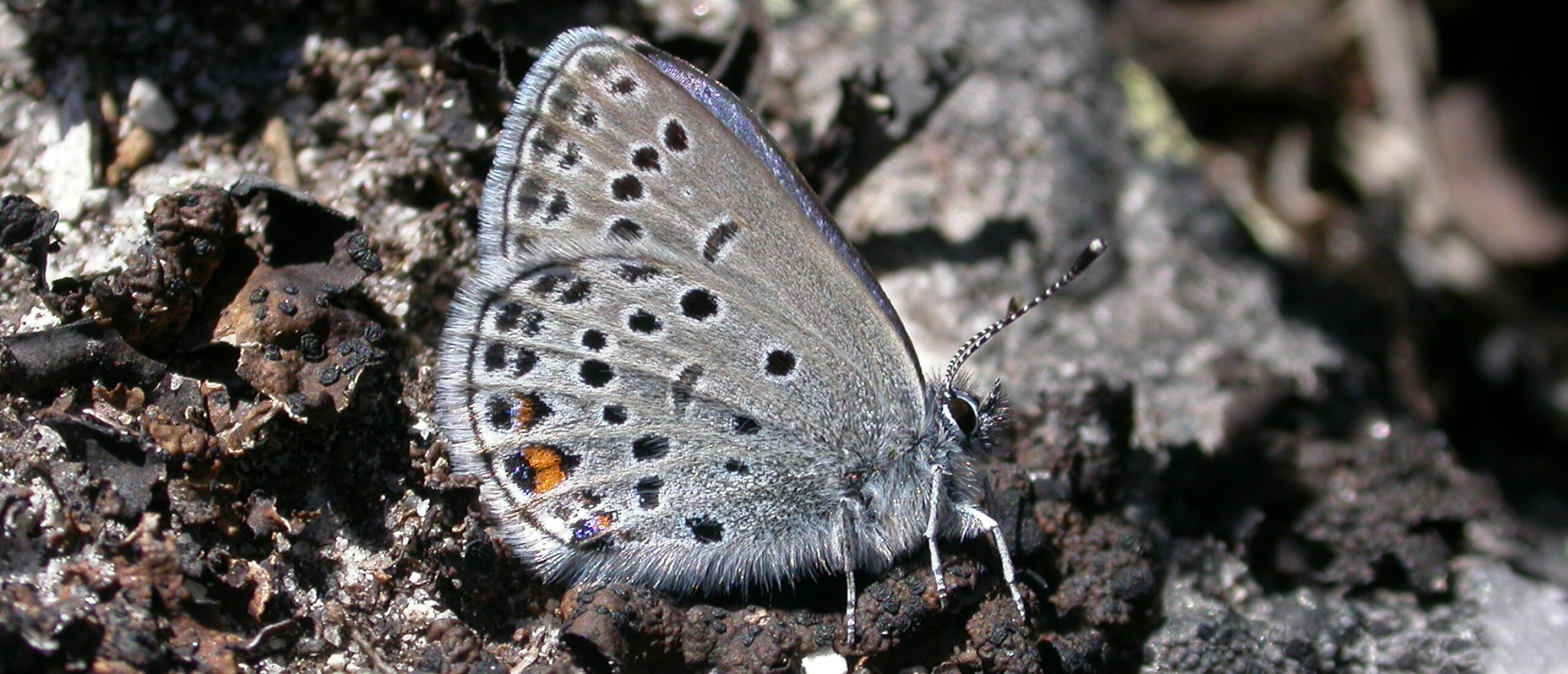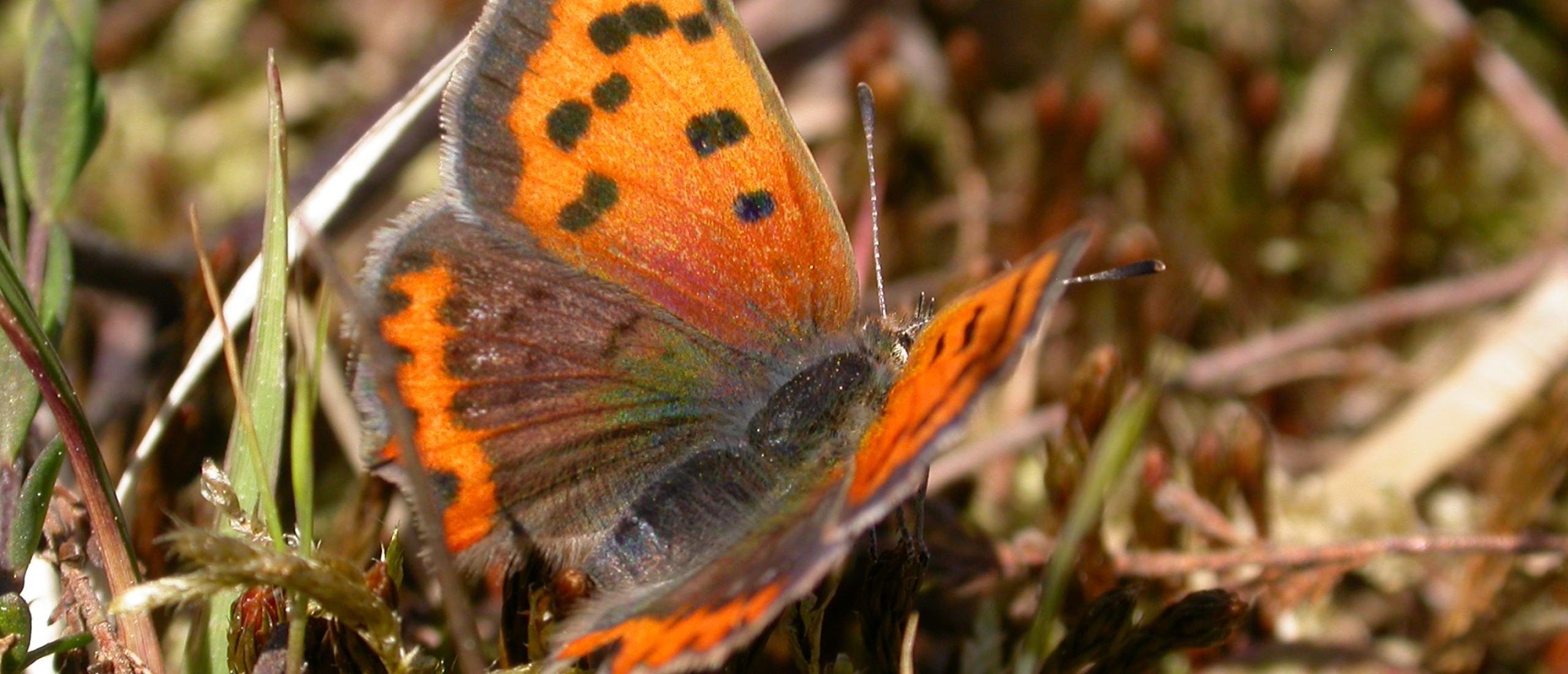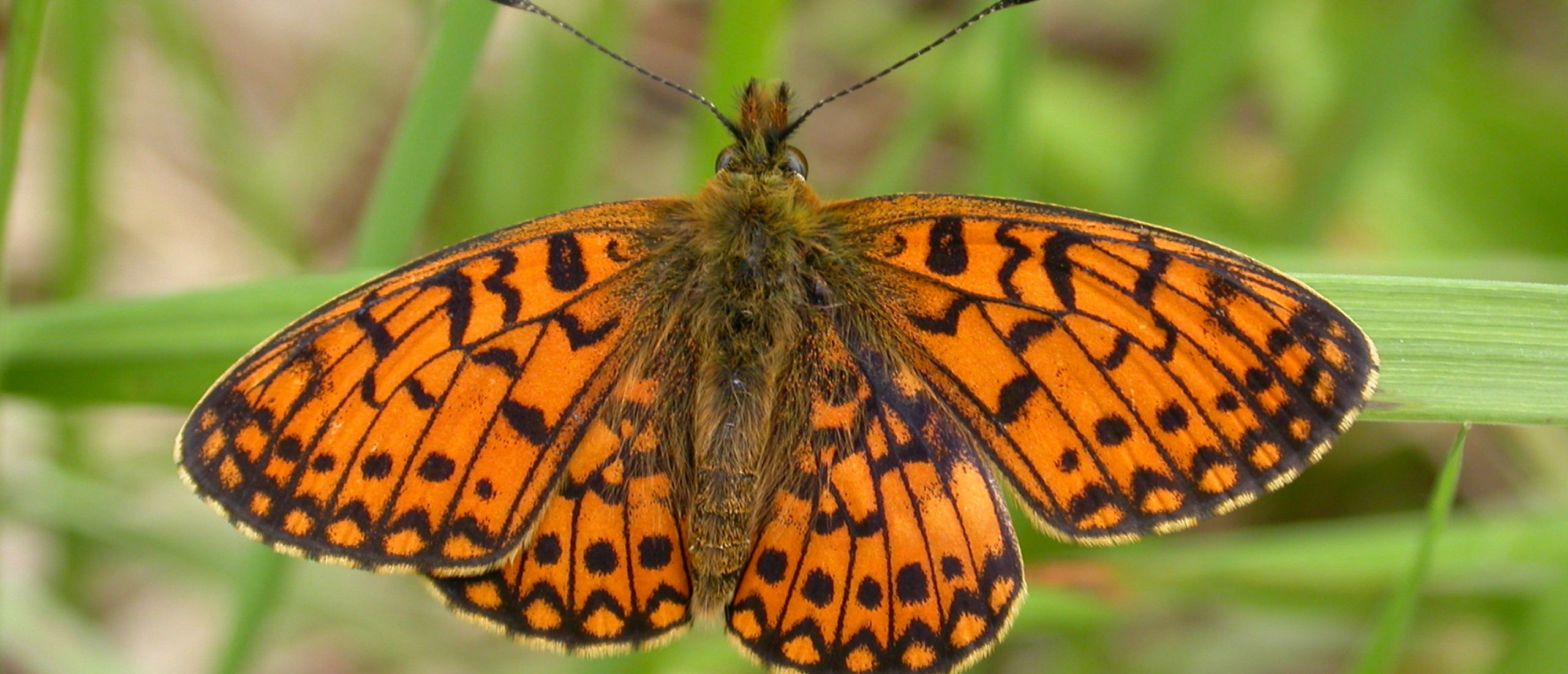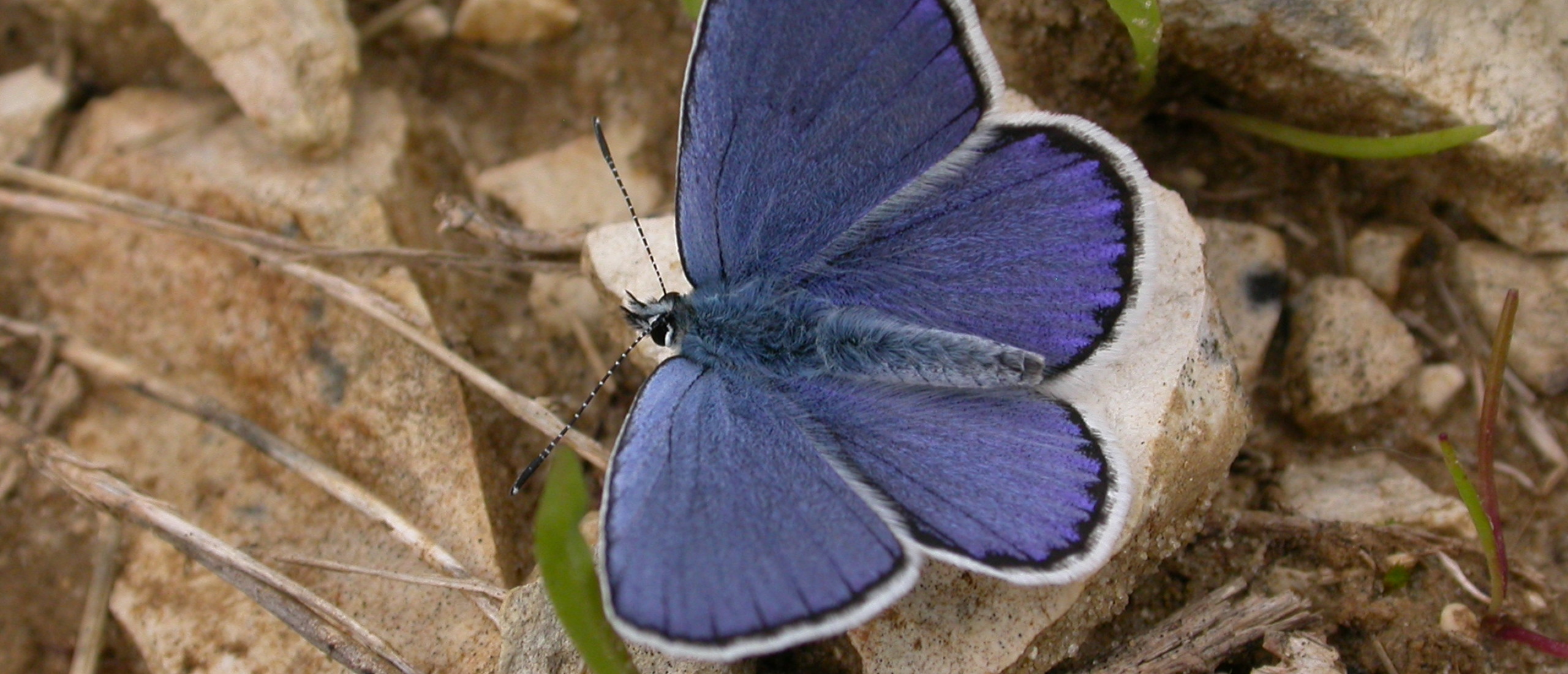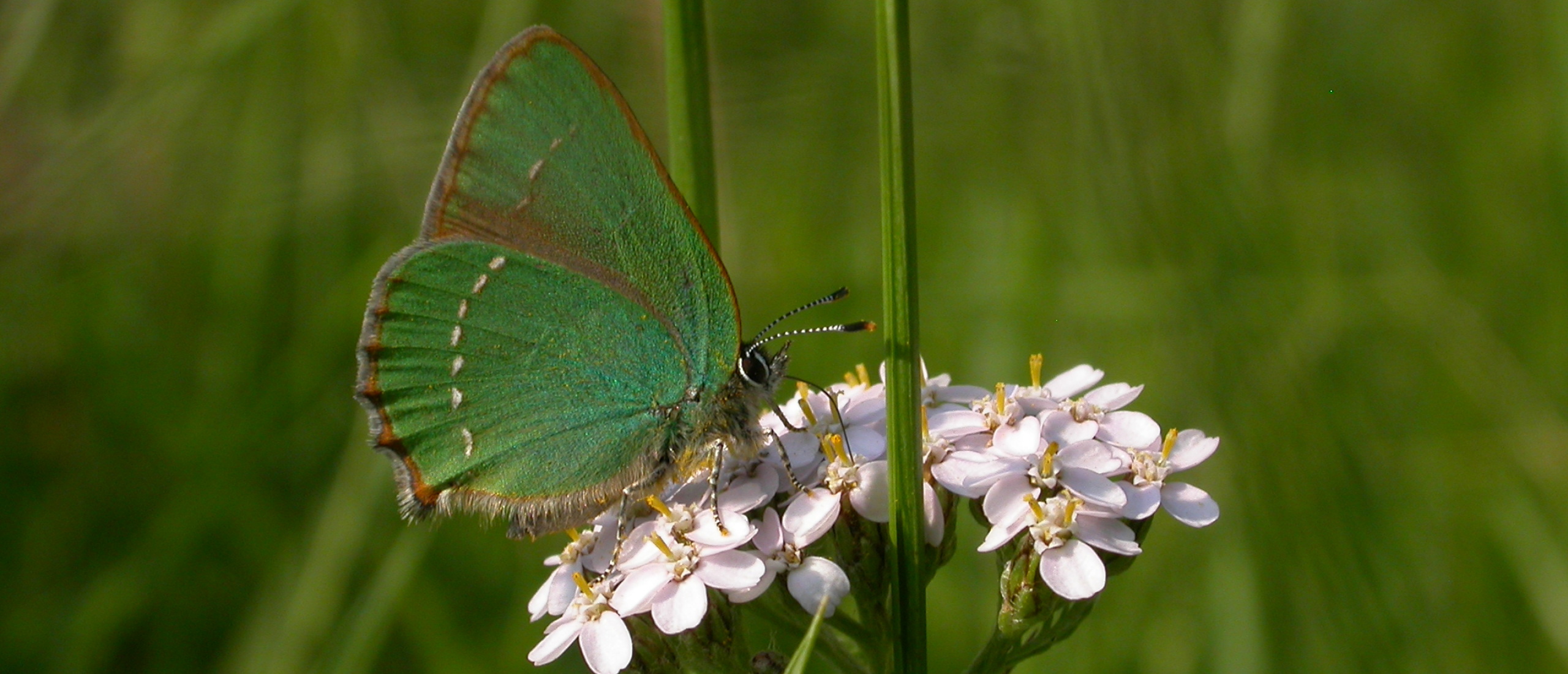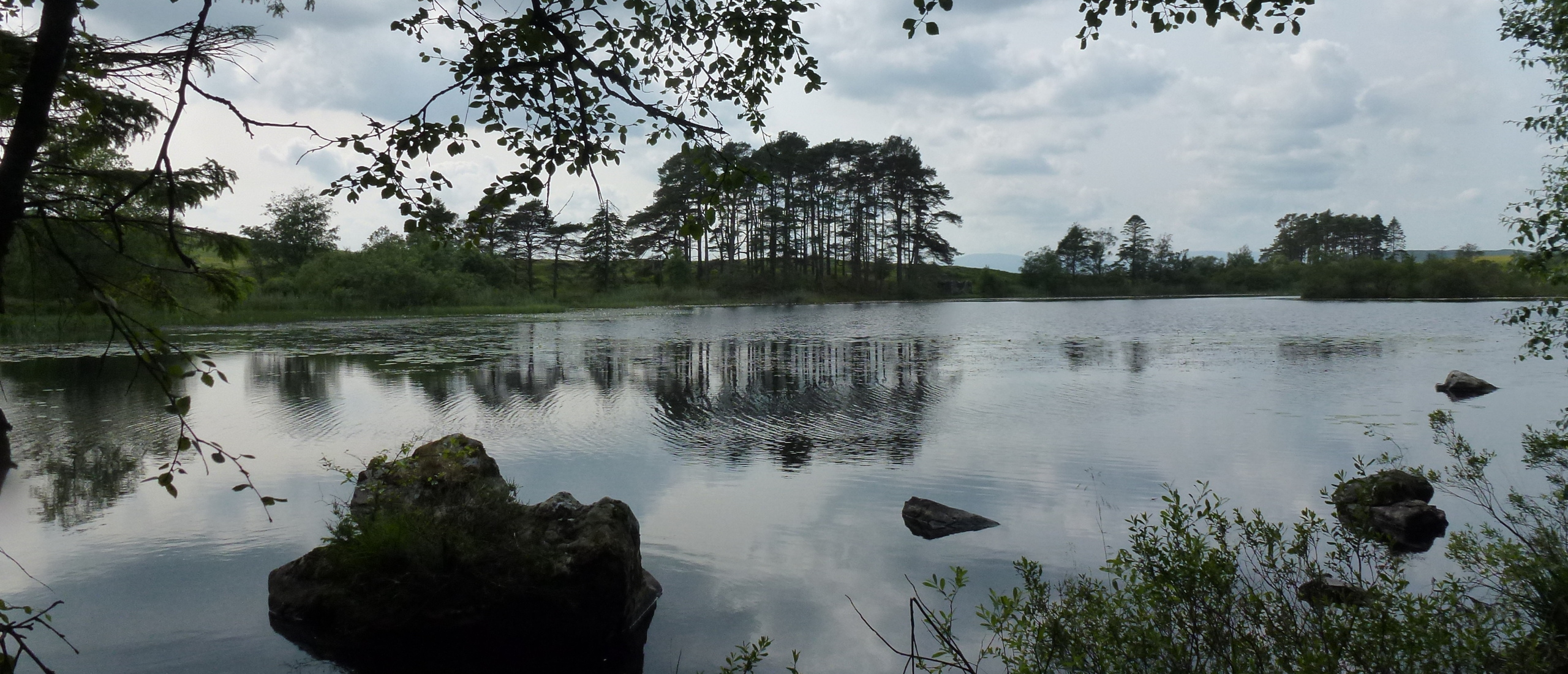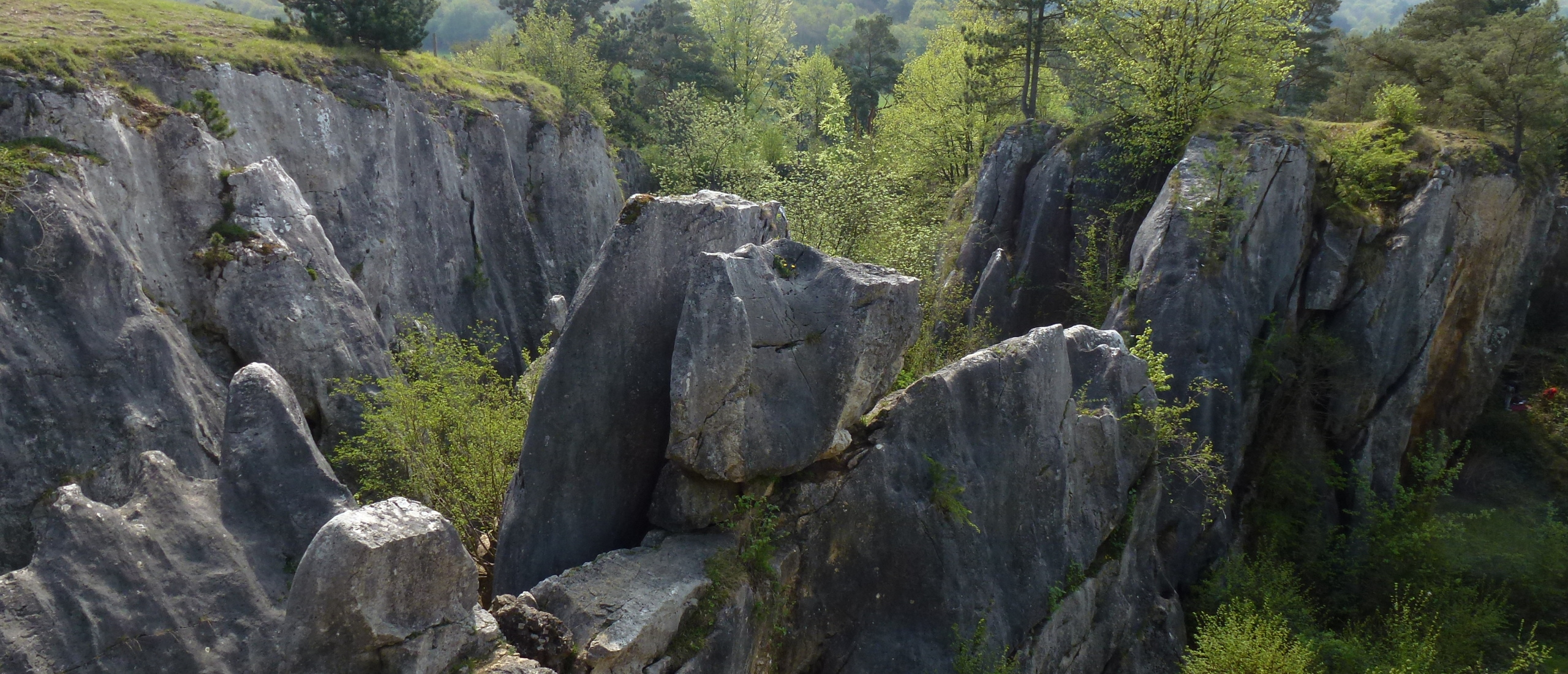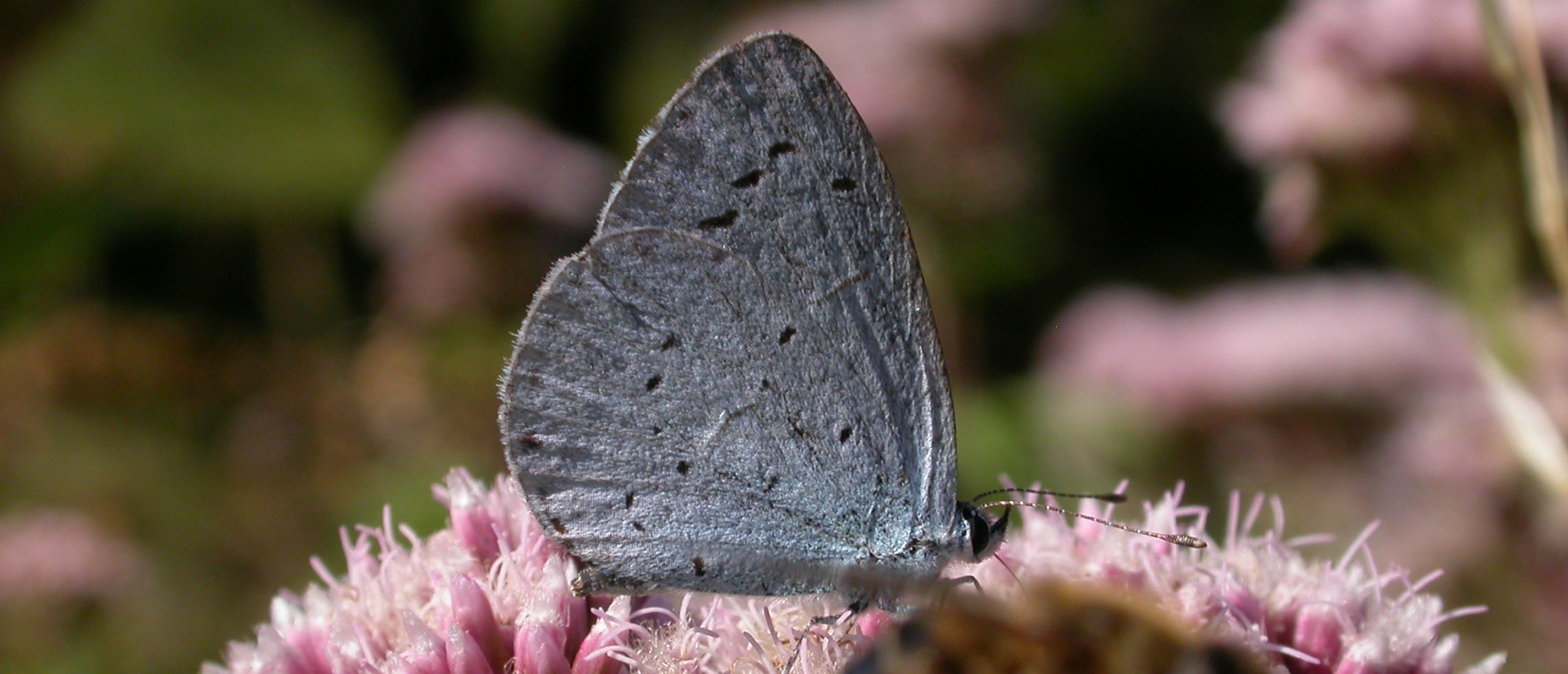
Another successful weekend - but is this the end? Friday 6th September was my last major excursion of the season in search of potential new species for my annual butterfly list - and it did not disappoint. I headed southwards to the military training area at Sissonne, an island of wild nature in a sea of intensive agriculture. I was slightly nervous, as I normally visit this location at the weekend, when there is less likelihood of being challenged by military personnel, but as the weather forecast for the weekend was less than promising, and I was free on the Friday, I thought I had better go for it while the going was good. My arrival coincided with a cloudy period, although the temperature was in the mid-twenties, but the lack of strong sunlight meant that little was flying. My usual strategy here is to drive along the one public road that crosses the military zone, and to stop at various points, checking the wide flowery verges without actually entering the closed area. I am always somewhat nervous of doing this, and I certainly would not want to be arrested or have my cameras confiscated. The approach of a military vehicle signaled that my fears were well-founded: two young soldiers asked me what I was doing, and whether anything was wrong. When I said "Je cherche des papillons", they clearly thought I was totally mad, and drove off with a cheery wave!
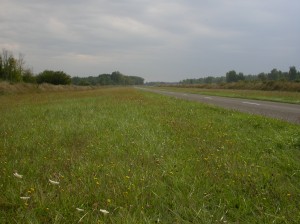 The flowery road verge where I was questioned by the French military
The flowery road verge where I was questioned by the French military
My first sightings were all of common species, mainly Common Blue, Polyommatus icarus, of which there were many, Brown Argus, Aricia agestis, Meadow Brown, Maniola jurtina, Small Heath, Coenonympha pamphilus, and three worn-looking Gatekeepers, Pyronia tithonus. Numerous Small and Green-veined Whites, Pieris rapae and Pieris napi, were to be seen nectaring on the many flowers, but of more interest were several Clouded Yellows, Colias croceus, and Berger's Clouded Yellows, Colias alfacariensis, some females of which were laying their eggs on the leaves of Horseshoe Vetch, Hippocrepis comosa. Separating this butterfly from the similar Pale Clouded Yellow, Colias hyale, is not an easy task, but as the Pale lays its eggs on Clover, Trifolium sp, these were clearly Berger's.
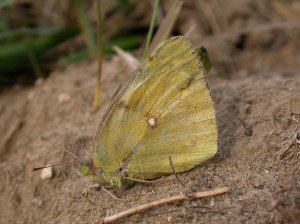 A tired-looking Berger's Clouded Yellow, with several rips in its wings
A tired-looking Berger's Clouded Yellow, with several rips in its wings
I checked the blues carefully, and it was not long before I had spotted two female Silver-studded Blues, Plebejus argus; interestingly, all the Silver-studded Blues I saw here earlier in the year were females too - where are the males?
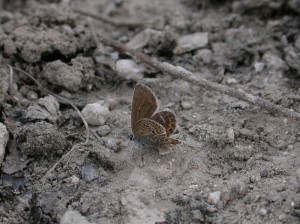 A female Silver-studded Blue - but where are the males?
A female Silver-studded Blue - but where are the males?
Another female, this one much larger, turned out to be a lone, late Reverdin's Blue, Plebejus argyrognomon, which posed cooperatively close to its foodplant, Crown Vetch, Coronilla varia, although I was unable to obtain a decent shot of its characteristic underside. Reverdin's Blue is a butterfly which I have only ever seen here in this area, and I normally find it in the spring, so this late individual was a bonus.
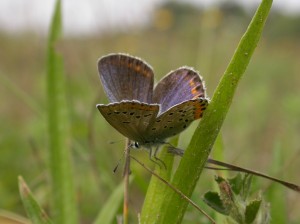 The lone female Reverdin's Blue
The lone female Reverdin's Blue
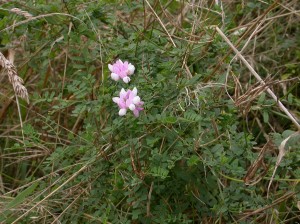 Crown Vetch, foodplant of the Reverdin's Blue
Crown Vetch, foodplant of the Reverdin's Blue
Suddenly, among the numerous, but rather faded-looking Common Blues, a much brighter and larger, almost celestial blue butterfly shot past. Luckily it landed not far away, and I was able to make a stealthy approach - it was, as I hoped, my target species for the day, the splendid Adonis Blue, Lysandra bellargus. This supremely beautiful butterfly, with its glistening, almost indescribable, powdery blue upperside, set off by the white fringes crossed by black veins (the key identification mark), is my father's favourite butterfly. We used to observe them on the white chalk cliffs at Beachy Head, and at Dover, but although they do occur on the downland of southern England, they are curiously absent from my regular haunts in northern France and southern Belgium, and this is the only area where I see them regularly over here. I had missed the spring generation, so this one was most welcome, raising my annual list to 76 species.
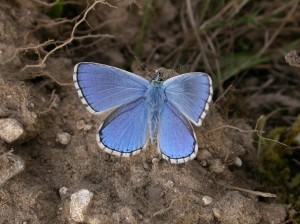 The celestial male Adonis Blue
The celestial male Adonis Blue
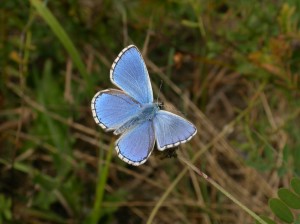 Can the male Adonis Blue be considered Europe's most beautiful butterfly?
Can the male Adonis Blue be considered Europe's most beautiful butterfly?
While following this gem as it moved from flower to flower, I spotted a tiny, dark shape fluttering weakly through the vegetation - a tired and ancient-looking Small Blue, Cupido minimus. In fact, I went on to see perhaps four of these, the smallest butterfly of the region, and was able to obtain some shots, but none were particularly photogenic and will probably not survive more than a few days more.
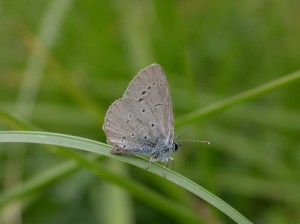 The diminutive Small Blue, now nearly over for this year
The diminutive Small Blue, now nearly over for this year
An orangey, almost fly-like shape darting past me turned out to be a female Silver-spotted Skipper, Hesperia comma, a species which I had seen but failed to obtain a decent photograph of a couple of weeks ago in the Netherlands, but here I was in with more luck, as this and two others assisted me rather more cooperatively, settling frequently on the flower-heads of yellow hawkweeds. When they flew off, their wings actually made a buzzing sound, adding to their fly-like character.
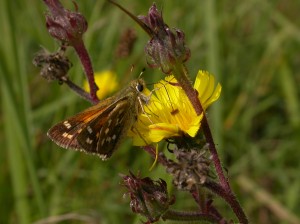 A female Silver-spotted Skipper stocking up on nectar
A female Silver-spotted Skipper stocking up on nectar
 The Silver-spotted Skipper must be one of the most streamlined of butterflies
The Silver-spotted Skipper must be one of the most streamlined of butterflies
Another small, brownish butterfly turned out to be a lone male Sooty Copper, Lycaena tityrus, which posed briefly on the dead flower-heads of plantain.
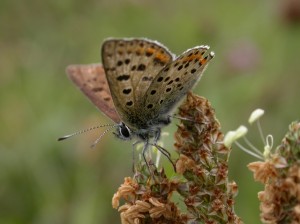 The Sooty Copper, also one of the last of the season
The Sooty Copper, also one of the last of the season
While I was busy photographing this individual, I caught a glimpse of the characteristic flight of a fritillary out of the corner of my eye. What could this be, so late in the year? A short chase ensued, and when it landed I found to my delight that it was a female of species number 77, a totally unexpected Spotted Fritillary, Melitaea didyma. Although I had seen this species here several years ago, it had somehow slipped my mind as a possibility, and I certainly would not have expected it in September - but here it was, a total bonus.
By now the temperature had reached around 30 degrees, and I decided to retreat to a more wooded area, but other than several Brimstones, Gonepteryx rhamni, a few Speckled Woods, Pararge aegeria, and perhaps four Commas, Polygonia c-album, there was little to be found here, so I headed to another chalky area of grassland, an orchid reserve that I visit quite regularly. The orchids were over for the year, but there were impressive numbers of Chalkhill Blues, Lysandra coridon, fluttering not only in the low grassland but also over the bushes and low trees. There must have been several hundred individuals in this small area, an impressive sight.
 A female Chalkhill Blue, one of hundreds at this site
A female Chalkhill Blue, one of hundreds at this site
The rest of the weekend yielded little, other than another female Brown Hairstreak, Thecla betulae, which unlike last weekend's cooperative individual only posed briefly, and did not allow me to obtain a photograph, but it was nonetheless a pleasant sight as I see this species only rarely. So, has my 2013 butterfly list come to an end on 77 species? There is virtually nothing else I could go for - but I had not expected the Spotted Fritillary, so will there be any more unexpected bonuses? Only time will tell. 2013 total as of 7th September: 77 species


